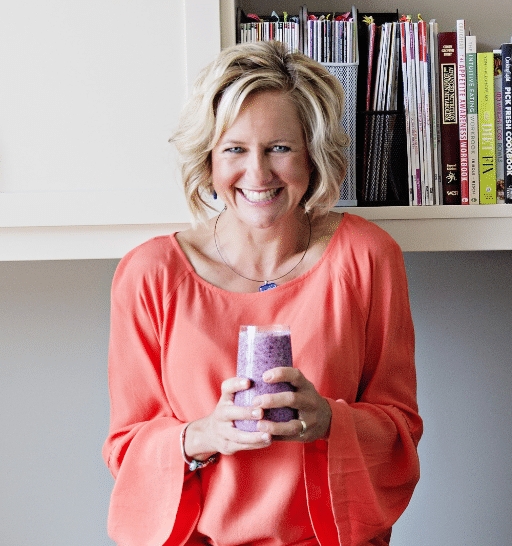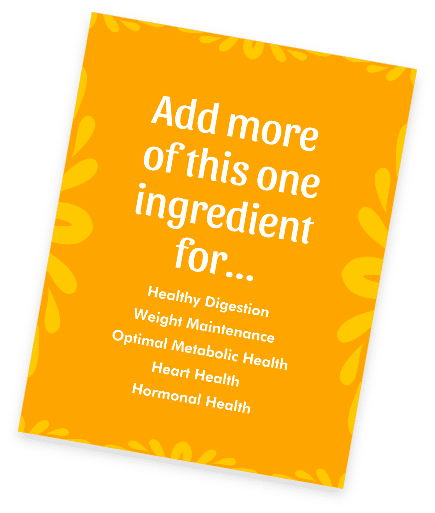Low-risk drinking guidelines – the bold new recommendations to rethink your drink
Canada’s new low-risk drinking guidelines for alcohol post many questions:
- Is it okay if I share a bottle of wine with my partner?
- What is my relationship with alcohol?
- Should I be motivated to reduce my alcohol intake?
- How will the role of alcohol in our culture change?
- What non-alcoholic drink can I order that doesn’t make me feel socially awkward for ordering it over a cocktail?
Are you one of the thousands of Canadians who are rethinking your habits with alcohol after hearing about the new Canadian Low-risk drinking guidelines?
Released in January of this year from the Canadian Center on Substance Use and Addiction, the Low-risk drinking guidelines sent a surprisingly strong message: drinking alcohol each week, even if just a little, can hurt your health, regardless of your age, gender, ethnicity, ability to tolerate alcohol, or your lifestyle.
With alcohol being used by 75% of people living in Canada, it is worthwhile understanding the impact that this substance has on our holistic health.
According to research outlined in the Low-risk drinking guidelines report, focusing on adults aged 25-65 years who choose to drink alcohol, alcohol use is the leading preventable cause of death, disability and social problems.
- Alcohol use is associated with injury, violence and health problems that can shorten your life.
- Alcohol is a carcinogen that can increase the risk of at least seven types of cancer, including breast, colon, rectum, mouth and throat, liver, esophagus, and larynx. Drinking less alcohol is one behaviour to reduce cancer risk.
- Alcohol is a risk factor for most types of cardiovascular disease, including high blood pressure, heart failure, atrial fibrillation, and stroke.
- Alcohol is one of the main causes of liver disease, which is on the rise in Canada.
How does our body process alcohol?
The chemical term for the alcohol that we drink is ethanol. About 20% of alcohol is absorbed in our stomach, it enters our blood where our blood alcohol levels rise. The remaining 80% of alcohol is absorbed in the small intestine to our blood stream and is then directed to our liver for metabolism and detoxification.
The liver can only break down about 1 drink per hour. Alcohol that is not broken down get recirculated to our brain, resulting in impairment and a reduction in self-regulation of our behaviour.
Alcohol may cause irritation to the stomach lining and inflammation to our small intestine. Alcohol is energy dense and may increase fat production.
New low-risk drinking guidelines
Alcohol has been consumed for thousands of years, where it has been involved in celebration and religion. Like most things that we enjoy, the dose makes the difference. How much and how often we consume alcohol matters.
If you choose to drink alcohol, drinking it in moderation can help reduce the risks of alcohol-related harms, both for short- and long-term health risks.
There is a continuum of risk associated with weekly alcohol consumption:
- No risk – 0 drinks/week
- Low risk – 1-2 drinks/week
- Moderate risks – between 3-6 drinks/week
- Increasingly high risk above 6+ drinks/week.
The new low-risk drinking guidelines advise to not exceed 2 drinks on any day, related to concerns of unintentional injuries and violence; people should not start to use alcohol or increase their alcohol use for health benefits.
There is no safe level of alcohol consumption when pregnant, driving or operating equipment or machinery.
Low-risk drinking: What counts as a standard drink?
The Low-risk drinking guidelines defines the following amounts as a standard drink:
- 12 ounces of beer at 5%
- 1.5 ounces of spirits at 40%
- 5 ounces of wine at 12%
- 2 ounce martini at 35% alcohol
Low-risk drinking: the size of your container matters!
I don’t know about you – but I rarely pour myself just a 5-ounce glass of wine. And if I share a bottle of wine with my partner, that means that we are each getting 2.5 drinks, putting us in the moderate risk category, plus we are each exceeding more than 2 drinks on a given day.
What about the new craft beers available, where alcohol can come in large, non-standard sizes? The alcohol content of beer can vary between 1.1 – 11% and up. See this graphic – are all beers created equal?
Low-risk drinking: How do the risks of alcohol consumption compare for people who identify as male vs female?
The report found identical risk thresholds for females and males at low levels of alcohol consumption. Above the upper limit of the moderate risk zone for alcohol consumption, the health risks increase more steeply for females than males. Enzymes, genes, lean body weight and size, organ function and metabolism are all important parts in processing alcohol. These factors impact alcohol in females causing higher blood alcohol levels, faster intoxication and more risk for disease including breast cancer.
Far more injuries, violence and deaths result from men’s alcohol use, especially in the case of per occasion drinking.
The challenges we all face with the low-risk drinking guidelines
Unlearning our previous beliefs that alcohol enhanced our health
Understanding how substances impact our health risk is one thing. For years we thought that alcohol like red wine improved our health profile. Newer research data disputes this. Wrapping our minds around the data used to inform these new guidelines and challenging our previous beliefs about alcohol will be a challenge for the generations of us who remember “back in the day” what we used to say about how alcohol helps us.
Curbing the normalization of harmful alcohol use
Another barrier to achieving these low-risk drinking guidelines is changing Canada’s drinking culture and curbing the normalization of harmful alcohol use in society. Had a bad day? Here, have a drink.
The normalization of alcohol use and binge drinking spans our cultural lifespan, starting with youth drinking, drinking among young adults, alcohol use in pregnancy, among parent culture, tailgating around sports culture, in midlife and amongst seniors.
Skills to manage social situations
Can we make it less socially awkward and more desirable and interesting to drink a non-alcoholic drink? While denying an alcohol-containing beverage shouldn’t be awkward, sometimes it feels awkward, like we have to explain our choice. How can we make holding a non-alcoholic drink more enticing and interesting? Can we learn and practice communication and assertiveness skills that help us stand strong in our choice?
Low-risk drinking: Rethink your drink with these tips
- Stick to the limits you have set for yourself around how much alcohol you plan to consume. As they say with lotteries and gambling, set a limit, stay within it.
- Drink slowly. Pace yourself to one standard drink per hour.
- Drink lots of water to help you hydrate.
- For every drink of alcohol, have one non-alcoholic drink.
- Choose alcohol free or low alcohol beverages.
- Eat before and while you are drinking to help slow the absorption of alcohol into your body.
- Have alcohol-free weeks or do alcohol-free activities. Find hobbies and people that increase your health and well-being. Find better ways to feel comfortable in social situations.
- If you are hosting, plan an interesting non-alcoholic option (see below), serve snacks throughout the evening, pace your drinking, ensure everyone either stays over or arrives home safely. Most of us have more fun when we drink more responsibly.
- Every drink counts. Every reduction in alcohol counts, even for those unable or unwilling to reduce their risk to low or moderate levels. If you consume high levels of alcohol, you have more to gain by reducing consumption as you are able.
For a self-assessment of your relationship with alcohol, plus habit-changing guidance and tips to drink less, click here. Please note that this resource has not been updated with the new low-risk drinking guidelines.
Mocktails to swap your sip and spice up your non-alcoholic drinks:
With some thought plus cool drinkware, you can create a beverage that you look forward to serving. Here are some ideas to get you started:
- Blackberry Bubbly with sliced cucumber and mint.
- Cranberry juice with club soda + frozen raspberries.
- Pineapply Bubbly with white cranberry flavoured white balsamic vinegar. This one goes in the don’t knock it until you try it category.
- Watermelon mint refresher
- Apple pear vanilla bean drink
- Pumpkin pie spicer
- Mocktails from Drink Sense Alberta
- 50 non-alcoholic drinks and mixers.
Where can you go for more information to further explore your relationship with alcohol?
Our relationship with alcohol is personal and sometimes difficult. Moderating your alcohol intake starts with self-awareness of how your drinking stacks up. Take this self-assessment quiz.
These resources will help you understand more about low-risk alcohol consumption.
These screening resources are intended for professionals to help identify individuals who drink alcohol beyond low-risk levels, as well as resources to guide treatment and referral for alcohol use disorders.
Resilience and failure: how to get back up after you have fallen
References
Paradis, C., Butt, P., Shield, K., Poole, N., Wells, S., Naimi, T., Sherk, A., & the Low-Risk Alcohol Drinking Guidelines Scientific Expert Panels. (2023). Canada’s Guidance on Alcohol and Health: Final Report. Ottawa, Ont.: Canadian Centre on Substance Use and Addiction. Available from: https://www.ccsa.ca/sites/default/files/2023-01/Canada%27s%20Guidance%20on%20Alcohol%20and%20Health%20Final%20Report.pdf
Canadian Center on Substance Use and Addiction. Knowing your limits with alcohol. A practical guide to assessing your drinking. 2019. Available from:
Tagged in: alcohol, Calgary Dietitian, Calgary Nutritionist, drinking, goal setting, habits, low-risk drinking, midlife habits


Welcome to the Energize Nutrition blog, where we share evidence-based nutrition content, designed to empower people’s midlife. Take a look around to find information on feeling your best.
If you need more individualized support, reach out to set up a free discovery call with Kristyn Hall.

Battling chronic hunger, poor energy, or inflammation? Discover what this powerful ingredient is and why it might be the solution!







